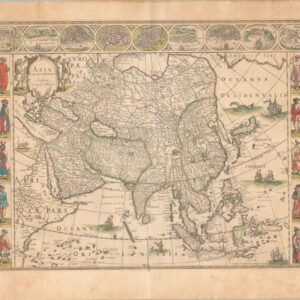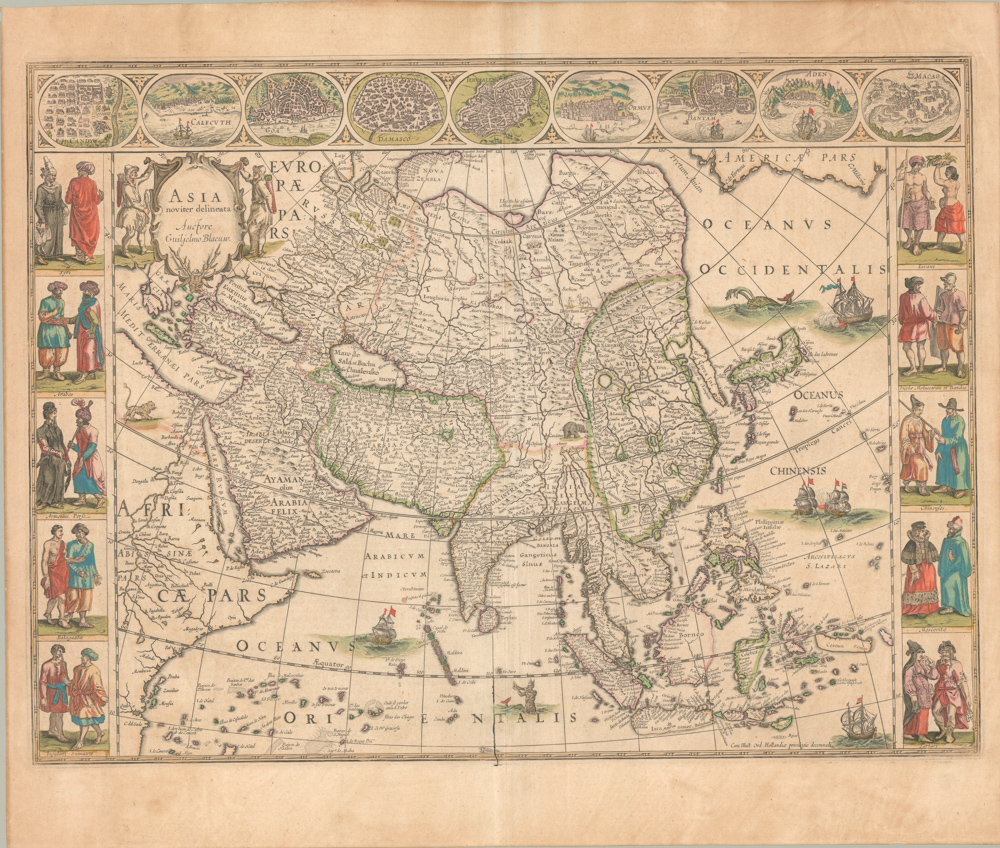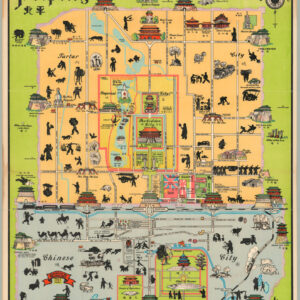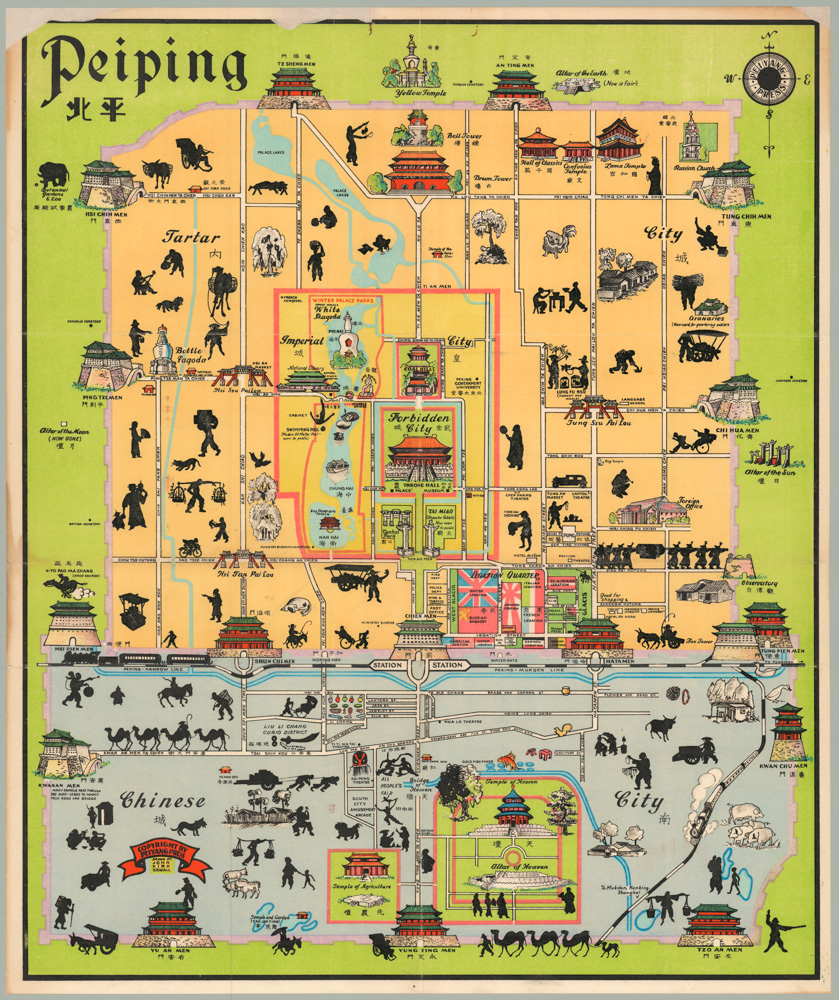Continental map of Asia by France’s Royal Geographer.
Carte Générale des l’Asie.
Out of stock
Description
This vivid double-sheet map of the continent of Asia was compiled by Royal Geographer Adrien Hubert Brué in 1838 as a new addition to his seminal Atlas universel de géographie.
In scope, the map covers from Western Europe to the Pacific Rim, but only the parts that belong to Asia have been endowed with the detail that Brué is famous for. Thus, Russia west of the Ural Mountains has practically no features, whereas this map expounds considerable detail east of this range. Anatolia falls under the same category in the Middle East, whereas Egypt or Thrace (the Greek part of Ottoman Turkey) remains completely blank. The map prominently includes most of insular Asia, including the Philippines, Japan, and minor archipelagos such as the Andaman, Nicobar, and Maldive clusters.
The map has been hand-colored to delineate political domains and geographic subdivisions. However, while some of these are administrative configurations (e.g., Russian Asia is divided into its respective provinces), other regions are delineated culturally, as is the case with the Arabian Peninsula, Persia, or Punjab. The regional subdivisions are well executed, with many known regions depicted about each other. Within larger domains such as the Indian Peninsula, we find the sweeping general labels such as Hindustan and more specific internal subdivisions and toponyms.
The map was produced at the height of the colonial era, with European powers fighting over the dominance of the rest of the world. In addition to the general subdivision of regions by color, Brué defines the colonial possessions of four European powers: England (red), Denmark (pinkish-orange), France (blue), and Portugal (yellowish-brown). Also delineated are indigenous polities, including the Indian states of Mysore and Sikkim and the Trinh kingdom of Tonkin, which would only be subjugated by the French in 1884.
The map is highly detailed throughout the continent, showing all major cities, rivers, and mountain ranges. Unlike most of Brué’s maps, this chart does not include a legend other than the above colors for European possessions. Instead, a complex set of scales is provided in the lower left corner. These indicate distances in various European and local measurement units (including Russian Versts, Persian Farsangs, Turkish Agates, and Arabic miles).
The map’s title is in a distinct scroll style consistent with the rest of the maps from Brué’s Atlas universel de géographie (1840). The title identifies Brué as a compiler and Charles Piquet of Paris as the printer/distributor. Printed on heavy paper with wide margins and surrounded by an elegant curvature-style border, the map is one of Asia’s best and most aesthetically pleasing cartographic renditions from the mid-19th century.
Context is Everything
Adrien-Hubert Brué was a Royal Geographer during the July Monarchy (1830-1848), in which Louis Philippe I reigned as King of France—this period of relative calm followed the massive social upheavals of the French Revolution and the subsequent Napoleonic Wars.
As Geographer to the King, Brué produced several vital maps and charts. Still, his most successful endeavor was the Atlas universel de géographie physique, politique, ancienne et moderne, from which this map derives. The original edition of the expanded atlas was issued in 1830, but a decade later, a second and enlarged edition was published. This edition saw several significant changes made to many maps and the addition of several new maps compiled in 1838. The Asia map is among these new additions.
Census
The map was published in the second and enlarged edition of Brué’s Atlas universel de géographie physique, politique, ancienne et moderne in Paris in 1840. This edition of the atlas included 68 engraved maps, of which 67 were double-page sheets like this one. The atlas covered contemporary and historical geography, including maps of Alexander the Great’s Empire or the Route of Exodus. It was published multiple times and in different versions between 1820 and 1875, with the first enlarged version issued in 1840. Our map derives from this enlarged edition.
The OCLC lists six institutional holdings of this map as a distinct sheet (OCLC no. 55659697), including examples at the National Libraries of Spain and Australia, the Osher Map Library at the University of Southern Maine, and in the university library holdings of Cornell and University of Texas.
Cartographer(s):
Adrien Hubert Brué (1786-1832) was a French cartographer active in the 18th and 19th centuries. He was born in Paris on March 20, 1786, and died of cholera on July 16, 1832, in Sceaux.
In his youth, Brué served as a cabin boy on various ships, including aboard the Naturaliste, which was part of the Baudin expedition (1800-1804) to the South Seas and New Holland (Australia). Upon his return, he began producing maps for a grand atlas, published for the first time in 1820. A new and better atlas was issued in 1830, the same year he was appointed Royal Geographer.
Brué’s production included various atlases and unique maps, all of which were recognized for the purity of the engraving and the accuracy of the information. His main work, the Atlas universel was expanded multiple by him and Charles Picquet (whose stamp is found on most of Brué’s maps). Among the many aspects that elevated Brué above his peers was the. The fact that he drew his maps directly onto copper plates, a process which he named cartel end prototypes.
Charles PicquetCharles Picquet (1771-1821) was a French cartographer especially celebrated for his collaborations with Adrien-Hubert Brué.
Condition Description
Very good.
References
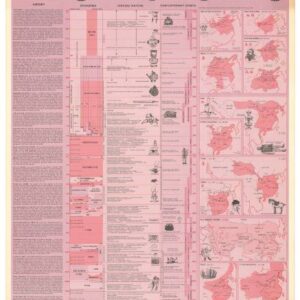
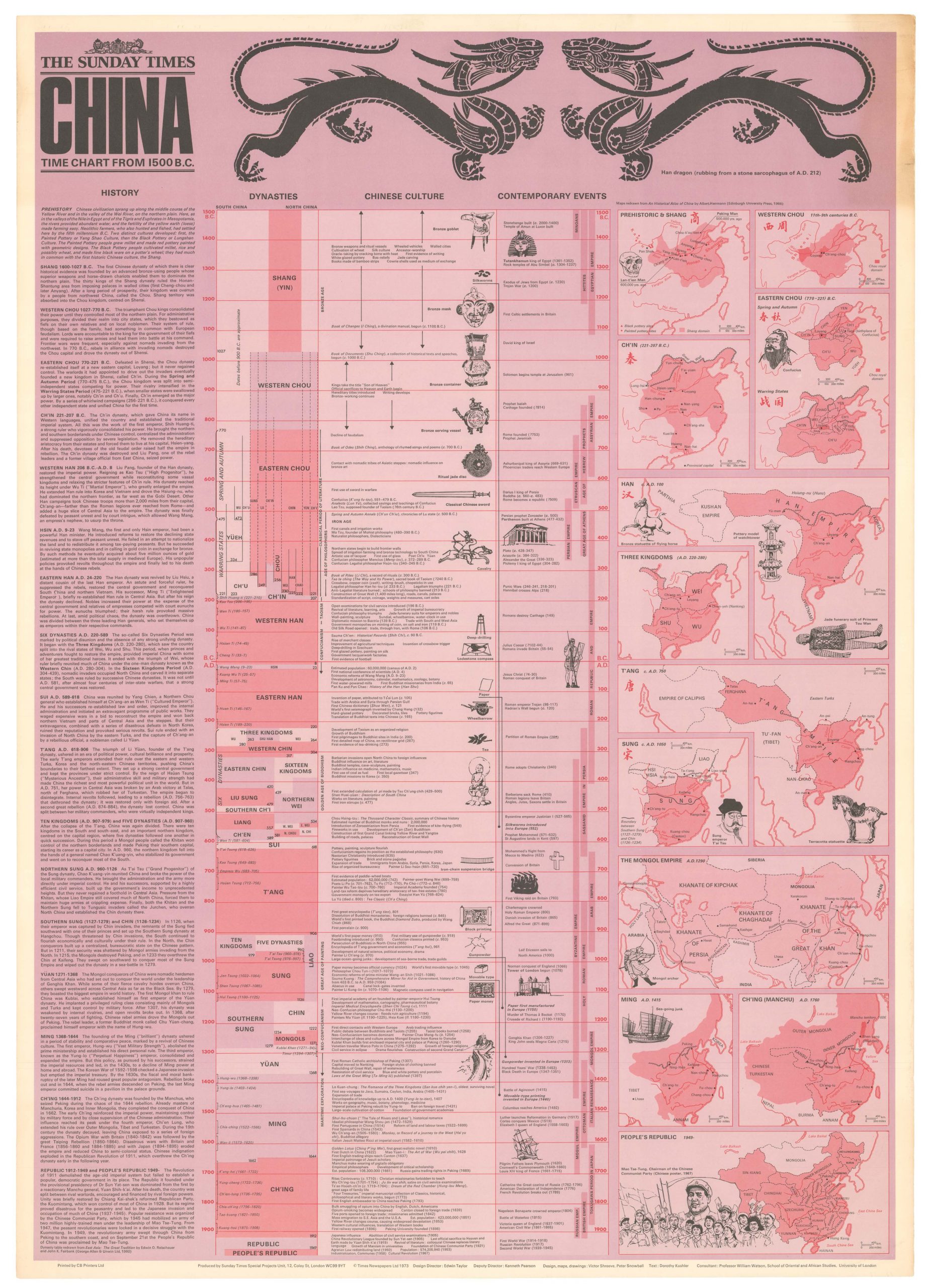
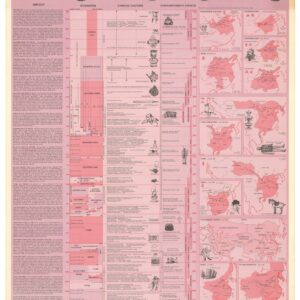
![[Northern India and Pakistan] Tabula Asiae IX.](https://neatlinemaps.com/wp-content/uploads/2023/07/NL-00244-NEW_thumbnail-300x300.jpg)
